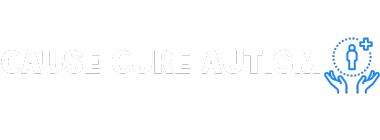Autism Spectrum Disorder (ASD) is a complex developmental disorder that affects social interaction, communication, and behavior. It is estimated that 1 in 54 children in the United States is diagnosed with autism, making it one of the most common developmental disorders in children. Autism therapy aims to help individuals with autism develop skills, manage symptoms, and improve their quality of life.
Challenges in Autism Therapy
One of the main challenges in autism therapy is the heterogeneity of the disorder. Each individual with autism presents with a unique set of strengths, challenges, and needs. What works for one person may not work for another. Traditional one-size-fits-all approaches to therapy may not be as effective in helping individuals with autism reach their full potential.
Personalized Approaches to Autism Therapy
Personalized approaches to autism therapy take into account the individual differences of each person with autism. These approaches are tailored to the specific needs, strengths, and goals of the individual, with the goal of maximizing the effectiveness of therapy and improving outcomes.
Assessment and Evaluation
The first step in personalized autism therapy is a comprehensive assessment and evaluation of the individual. This may include a thorough review of medical history, developmental milestones, communication skills, social interactions, sensory sensitivities, and behavioral challenges. Assessments help identify areas of strength and areas that need improvement, guiding the development of a personalized therapy plan.
Individualized Treatment Plans
Based on the assessment results, a personalized treatment plan is developed for the individual with autism. This plan may include a combination of different therapies, interventions, and strategies tailored to the specific needs and goals of the individual. Some common approaches to personalized autism therapy include:
- Applied Behavior Analysis (ABA): ABA is a widely used therapy that focuses on improving specific behaviors through positive reinforcement. It is tailored to the individual’s unique needs and goals.
- Speech Therapy: Speech therapy helps individuals with autism improve their communication skills, including speech, language, and social communication.
- Occupational Therapy: Occupational therapy helps individuals with autism develop the skills needed for daily living, such as motor skills, sensory processing, and self-care.
- Sensory Integration Therapy: Sensory integration therapy helps individuals with autism better process and respond to sensory input, reducing sensitivity or aversion to certain stimuli.
Family Involvement
Personalized autism therapy often involves active participation and collaboration with the individual’s family. Family members are important partners in the therapy process, providing support, reinforcement, and continuity of care outside of therapy sessions. Family involvement helps ensure that the therapy plan is implemented consistently and effectively, leading to better outcomes for the individual with autism.
Conclusion
Personalized approaches to autism therapy are essential for addressing the unique needs and challenges of individuals with autism. By tailoring therapy to the specific strengths, goals, and needs of each individual, personalized approaches can maximize the effectiveness of therapy and improve outcomes. Assessment, individualized treatment plans, and family involvement are key components of personalized autism therapy, helping individuals with autism reach their full potential and improve their quality of life.

